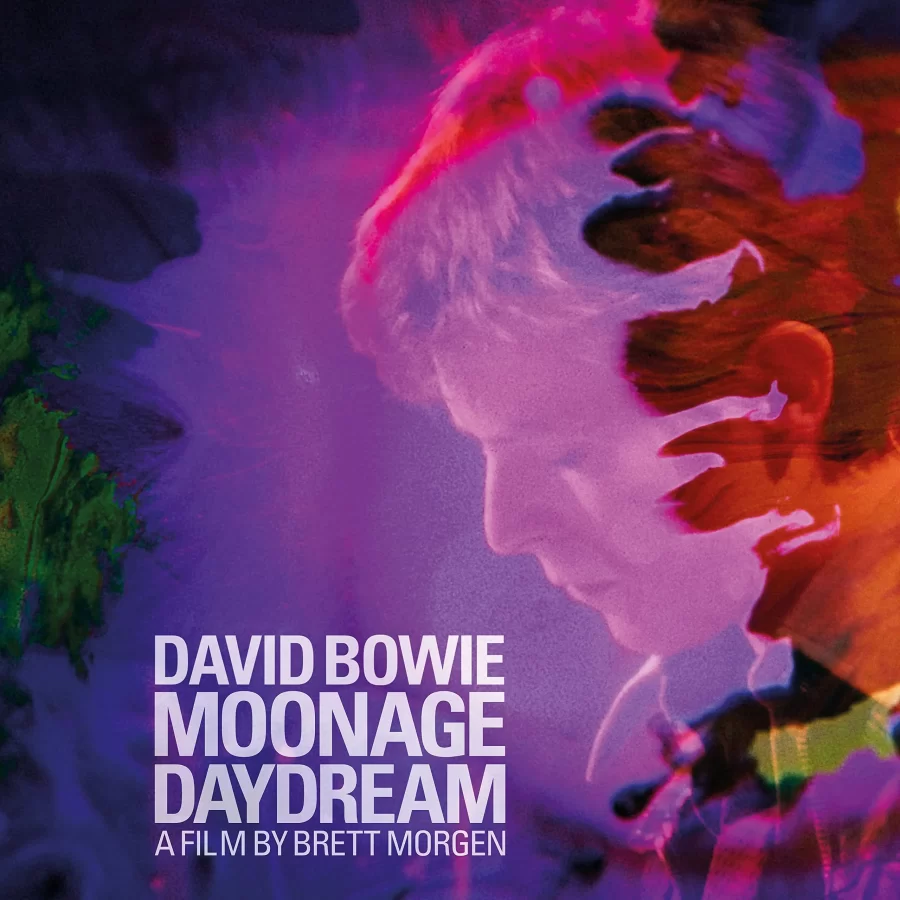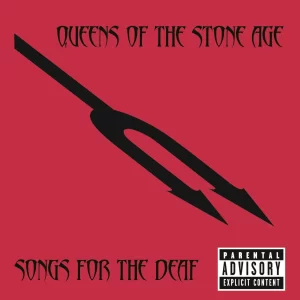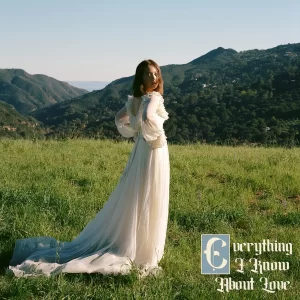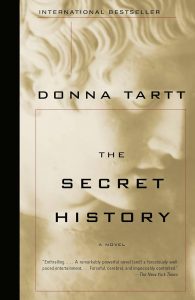‘Moonage Daydream’ Is Wild and Kaleidoscopic, Just Like David Bowie
Live Nation Productions
“Moonage Daydream,” a Bret Morgen documentary about rock star David Bowie was released Sept 16, and details the life of the world-famous singer through a colorful collage of flashing photos and recordings.
September 26, 2022
David Bowie was far from an average rockstar, and Brett Morgen’s new documentary about the glamorous singer is anything but. The documentary is a mish-mash story of the late star, who passed away in January of 2016, using overlapping snippets of concerts, feature films, plays, artwork, sculptures, interviews, and photos to communicate about his work. It’s everything a classic documentary isn’t — it’s a compilation of the inner workings of Bowie’s brain, and is the explanation of his complex emotional system.
Instead of sauntering through Bowie’s life chronologically, Morgen conjures the very presence of the singer through an artful collection of his life experiences. Morgen plays with the timeline as he pleases, looping back and forth, throwing the watcher headfirst into the world of David Bowie.
The documentary does not begin with a young Bowie shown through happy photos of his childhood, but with a strange array of photos and videos ranging from his personal artwork and photos to the Berlin Crisis of the early 60s. Overlaid with flashing colors and photographs is a monologue as Bowie speaks about the complexity of time and prods at the question that sets the tone for the entire film: “Does it matter? Do I bother?”
In a nutshell, “Moonage Daydream” is a documentary about the exterior of David Bowie, encompassing all of his performances, his time in Berlin, his artworks — both theatrical and material — and small, almost unnoticeable, allegorical quotes pointing towards his mental health and family life. The interior of the internationally famous star is barely touched upon; the film does not discuss his first wife, American actress Angela Barnett, much of his childhood, or any of his early career.
The lack of mention about Barnett doesn’t bother me, but absence of his earliest career does. The film focuses on his most well-known persona, Ziggy Stardust, who he assumed the role of from 1972-1973 and associated with his concept album “The Rise and Fall of Ziggy Stardust and the Spiders from Mars,” which featured popular tracks like “Moonage Daydream,” “Starman,” and “Rock n’Roll Suicide.” Although I love Ziggy as much as the next man, I would have loved to see more about early Bowie, like his time in smaller bands like The Konrads, King Bees, Lower Third, and the Monkees.
In addition to early Bowie, I would have appreciated it if the documentary had touched upon some of his collaborations and covers. Bowie worked with Iggy Pop in 1977 to write “The Idiot” and “Lust For Life”, Nile Rodgers and Stevie Ray Vaughan for “Let’s Dance” in 1983, as well as many more artists. Seeing footage from recording those songs or live performances with the artists would have added an extra level to the film.
When his childhood was mentioned, I immediately felt two emotions; heartbreak and admiration. As Bowie described the coldness of his parent’s relationship and was prodded at by a reporter about his mother, I felt sadness for him – but also realization and admiration for how his personal life had influenced his music. I felt especially impressed when a still of Bowie during a photoshoot for “Heroes” gazed down on his childhood self as the title track for his 12th studio album began playing. The scene was gut wrenching and made me feel deeply for the rockstar, bringing them even further into the immersive atmosphere Morgen’s work created.
As an avid fan of the “Serious Moonlight” tour in promotion of Bowie’s 1983 album “Let’s Dance,” my favorite part of the film was the documentation of the singer’s ‘rebirth’ after a brief break from the music world. Fresh from his divorce from Barnett and writing hit-single “Under Pressure” with Queen, Bowie released his fifteenth studio album and announced a tour that would start off his path to world domination.
Morgen pulls together videos and stills from his 96-performance tour, stitching together recordings of songs like “The Jean Genie,” “Ashes to Ashes,” “Modern Love,” and “Fame.” The way the videos are stitched together made me feel like I was attending the concerts myself, I even had to stop myself from applauding after the segment ended as if it was real life.
That’s the experience that really stuck with me — how much I felt like I’d been inside the world of David Bowie. The film feels like you’re peering into Bowie’s mind with a kaleidoscope, digging into rockstar megalomania and obscurity with ease.
“Moonage Daydream” focuses on what it was like to be David Bowie, but also what it was like to be interested in his music in the 1970s and ‘80s. Context is left to yourself to provide, which adds a certain air of investigation as you’re watching the documentary. Morgen’s collage of images and videos from an exquisite view of how Bowie operated, and how the world around him influenced his work.






















